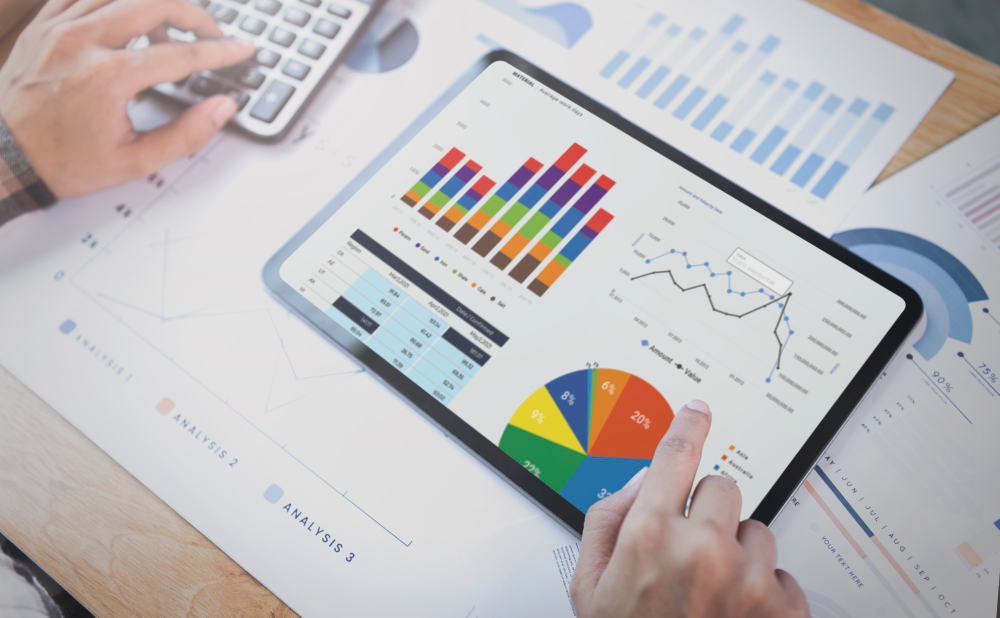
In an era where data drives decisions, predictive analysis stands at the forefront, revolutionizing sectors from healthcare to finance, manufacturing, and beyond. This powerful form of analytics uses current and historical data to forecast trends, behaviors, and outcomes, providing significant advantages in an increasingly competitive market landscape.
By incorporating predictive analysis, different industries are not only optimizing their current operations but are also investing in a future where data-driven decision-making becomes a cornerstone of strategy and growth. Statistics show that the market size of global predictive analytics is expected to reach $35.45 billion and grow at a CAGR of 21.9% between 2020 to 2027.
In this blog, let us explore how industries can benefit from it.
What Is Predictive Analysis & Why It Is Crucial for Business Growth
At its core, predictive analysis is a process that extracts information from existing data sets with the intent to determine patterns and predict future outcomes and trends. It encompasses a variety of statistical techniques spanning Data Mining, Machine Learning, and Predictive Modeling.
The reason for the broad adoption of predictive analysis is its capacity to anticipate future events with significant accuracy, based on patterns in historical and current data. Businesses leverage these insights to assess risks, identify opportunities, and understand customer behaviors. From improving operations and mitigating risks to optimizing customer service and product development, predictive analysis informs decision-makers, thereby guiding organizations toward strategic, data-backed decisions.

Diving Deeper: Components and Mechanics of Predictive Analysis Process

Data Collection
In this step, significant volumes of high-quality and relevant data is collected from varied sources, including transactional systems, IoT devices, surveys, and social media. This raw data, both structured and unstructured, when cleaned gives insights into user behavior, market trends, and operational performance.
A business guide states that 90% of the content is unstructured - that is a huge amount of data that can be processed, cleaned, and turned into insightful information. If unused, businesses may lose on crucial inputs.

Data Analysis and Processing
In this step, data is cleaned and turned into reliable and error-free information. For data cleaning, sophisticated software and skilled analysts inspect, cleanse, and validate data, ensuring it is prepared for accurate and insightful analysis.

Statistical Modeling
Analysts use advanced statistical methods, algorithms, regression analysis, and other techniques to modify assumptions and inputs and focus on the most accurate, predictive model.

Deployment
Post-development, the predictive model integrates into the decision-making tools of an organization, such as CRM solutions and enables real-time predictions based on current data, directly impacting operational decisions and strategies.

Monitoring and Updating
At this stage, companies can continuously monitor and update the latest data in response to the ever-evolving market conditions, consumer behavior, and economic factors. Thereby ensuring the efficacy in decision-making processes is continuous.
How Predictive Analysis Strengthens Business Tools for Strategic Foresight
In today’s high-tech business world, tools Customer Relationship Management (CRM), Configure, Price, Quote (CPQ), Contract Lifecycle Management (CLM), Digital Commerce, Cloud Financials, and Enterprise Resource Planning (ERP) systems act like the control room for a company’s operations and decision-making.
These tools not only keep the business running day-to-day, but gather tons of information that can be used to predict what customers may want and how the market can behave. For instance, CRM systems are filled with customer information, helping companies anticipate customer needs before they even arise. PWC report states that 82% users would share some type of personal information for better customer experience. CLM and CPQ systems track past deals, helping businesses predict what offers might attract more customers in the future. Digital commerce platforms look at online shopping data to guess what buyers might be interested in next.
Likewise, Predictive analysis uses data from Cloud financial tools and ERP systems to track the company’s money matters, predict future financial trends, and consider other data inputs to eliminate overstocking and delays to make sure the products are delivered at the right time.
When these business tools are connected, they share information and give a complete picture of the business from all sides. Using predictive analysis, companies can process the collected data to accurate predictions, readying themselves for upcoming trends, address customer needs, and grow effectively.
Impact of Predictive Analysis across Industries
Predictive analysis is penetrating numerous sectors, each harnessing the power of the model uniquely.

Healthcare Industry
Healthcare industry uses predictive analysis to enhance patient care, improve operational efficiency, and ensure financial stability. This analysis also helps in identifying and preventing diseases, improving patient outcome, and the developing advanced treatment protocols by analyzing patient records, genetics, and behavior patterns.

Finance Sector
The financial sector utilizes predictive analysis to fortify itself against risks and uncertainties. Credit scoring, for instance, uses predictive modeling to assess a borrower's likelihood of default, informing lending decisions and interest calculations. Additionally, investment entities leverage it for portfolio management, using market pattern analysis to predict stock trends and inform investment decisions.
Plus, financial companies can use predictive models to enhance customer satisfaction. A report states that 53% of financial customers would switch providers for better digital experience.

Manufacturing
In the manufacturing sector, companies are leveraging predictive analysis for 'predictive maintenance.' Rather than following traditional schedules or waiting for equipment to fail, companies use data-driven insights to predict equipment failures before they occur.
For example, an oil refining company used predictive analytics to continuously track equipment health and used historical data to predict possible breakdowns. This helped the customer improve its accuracy by >77% in explaining the abnormal events using root cause analysis.
In addition, manufacturers can improve quality assurance, supply chain efficiency, and reduce production waste, thereby contributing significantly to sustainable manufacturing practices and the bottom line.

Education
Educational institutions are using predictive analytics to enhance student performance and retention. By analyzing data points such as attendance records, grades, and individual learning patterns, institutions can predict student outcomes, identify at-risk individuals, and design targeted intervention strategies.
This approach ensures tailored educational experiences and improves overall institutional performance.

Transportation and Logistics
Predictive analysis can help users optimize their route plan by analyzing data inputs on traffic patterns, weather, driving habits, fuel consumption, and delivery times.
Additionally, predictive tools assist in strategic planning, including warehouse management and inventory levels, and forecast supply chain disruptions, allowing companies to react proactively to ensure uninterrupted operations.
The Competitive Edge: Embracing Predictive Analysis
In conclusion, predictive analysis is turning out to be the cornerstone of modern strategic planning, providing deep insights that drive data-driven decisions. By anticipating future challenges and opportunities, organizations can strategize proactively, ensuring preparedness and competitive advantage. However, this requires not only investment in technology but also in people—data scientists, analysts, and decision-makers—who can meld human insight with computational power.
In this data-saturated age, predictive analysis is becoming a necessity for maintaining a competitive edge. Businesses that can foresee future trends and adapt accordingly will not just survive but will thrive. If you are looking to modernize your enterprise with the latest technologies, Forsys is your go-to partner. To know more about our expertise, talk now.

